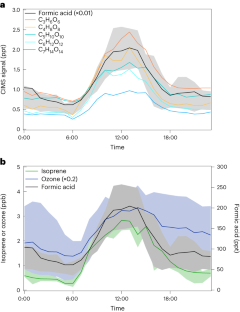2024-02-05 アリゾナ大学
<関連情報>
- https://news.arizona.edu/story/james-webb-space-telescope-captures-end-planet-formation
- https://iopscience.iop.org/article/10.3847/1538-3881/ad22e1
JWST MIRI MRSによるT Chaの観測: 空間的に分解された円盤風の発見 JWST MIRI MRS Observations of T Cha: Discovery of a Spatially Resolved Disk Wind
Naman S. Bajaj, Ilaria Pascucci, Uma Gorti,, Richard Alexander, Andrew Sellek,, Jane Morrison, Andras Gaspar, Cathie Clarke, Chengyan Xie, Giulia Ballabio +
The Astrophysical Journal Published 2024 March 4
DOI:10.3847/1538-3881/ad22e1

Abstract
Understanding when and how circumstellar disks disperse is crucial to constrain planet formation and migration. Thermal winds powered by high-energy stellar photons have long been theorized to drive disk dispersal. However, evidence for these winds is currently based only on small (∼3–6 km s−1) blueshifts in [Ne ii] 12.81 μm lines, which does not exclude MHD winds. We report JWST MIRI MRS spectro-imaging of T Cha, a disk with a large dust gap (∼30 au in radius) and blueshifted [Ne ii] emission. We detect four forbidden noble gas lines, [Ar ii], [Ar iii], [Ne ii], and [Ne iii], of which [Ar iii] is the first detection in any protoplanetary disk. We use line flux ratios to constrain the energy of the ionizing photons and find that argon is ionized by extreme ultraviolet, whereas neon is most likely ionized by X-rays. After performing continuum and point-spread function subtraction on the integral field unit cube, we discover a spatial extension in the [Ne ii] emission off the disk continuum emission. This is the first spatially resolved [Ne ii] disk wind emission. The mostly ionic spectrum of T Cha, in combination with the extended [Ne ii] emission, points to an evolved stage for any inner MHD wind and is consistent with the existence of an outer thermal wind ionized and driven by high-energy stellar photons. This work acts as a pathfinder for future observations aiming at investigating disk dispersal using JWST.



